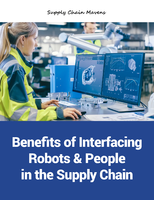Konica Minolta Vivid 9i the Right Fit for Timberland Footwear
Share:
Flexible, accurate 3D scans shorten last design cycles 25-30%
Ramsey, NJ August 7, 2006- For its internationally recognized outdoor footwear, Timberland needed an accurate way to ensure consistent comfort and fit across its diverse product line, a means to communicate its designs to its overseas factories, and an approach that would help create new designs faster. The company found solutions to all three in the VIVID 9i from Konica Minolta, the most flexible, high-precision laser 3D digitizer. According to Timberland CAD Manager Toby Ringdahl, the laser optic instrument has saved Timberland some footwork, shortening the shoe last design and development cycles up to 25-30%.
To make sure a shoe fits, designers of new footwear start literally from nothing -- the empty space inside the shoe, represented in a positive form called a "last" The old art of shoemaking required lasts made of wood -- rough forms upon which leather pieces were fitted, stretched, and stitched together. Today, lasts are still the first step when producing new footwear ideas across various shoe sizes. The last is the secret to giving the final product a comfortable fit. To design and develop new lasts, Timberland for many years relied on hand-worked plastic last prototypes from an outsourced company.
The addition of a single Minolta VIVID 9i scanner allowed Timberland to perform much of its last development within the CAD office of its Stratham, NH headquarters. The VIVID 9i uses laser optics to record the shape of the last by capturing the surface contour and representing it as thousands of 3D x,y,z points of an object in seconds. The accompanying Studio software from Geomagic software easily converts the point cloud data into a 3D CAD model for import into SolidWorks.
"The VIVID 9i gave us a lot of benefits," reports Ringdahl. "We're now building an electronic last library so we can start to reuse sections and areas of lasts, which help us maintain consistent fit and feel in out footwear products. The VIVID 9i has also allowed us to communicate electronically with our factories instead of physically shipping lasts. By scanning the last, we're able to manipulate it digitally with CAD software, and then send the 3D scanned last file back and forth to our factories in the Far East."
For Timberland, the investment in the state-of-the-art measuring system has already paid off since adopting the technology in January 2005. Cost was a criterion in the initial decision, said Ringdahl, as was accuracy. Some other technologies, such as desktop laser scanner configured into a cabinet, were limited in the size of object they could scan and by the level of accuracy. "Structured light" scanning delivered on accuracy, but was too costly and too complex to use.
Timberland found the best attributes in the Konica Minolta solution. Operating much like a 3D camera, the VIVID 9i comes with three interchangeable lenses (telephoto, middle, and wide-angle), which increase or decrease the range of optical input. (A single scan can range from four square inches to over three square feet, and scans can be tiled together for larger objects). "We have the option of making models of something larger, like a boot, and also the ability to zoom in and capture more intricate details," says Ringdahl. "The VIVID 9i definitely had the highest accuracy, considering the cost." The VIVID 9i is capable of a resolution up to + 0.008 millimeters.
Design iterations to lasts now involve quick scans with the VIVID 9i (or retrieval of past scans from the electronic library) matched with physical prototypes. Timberland uses rapid prototyping in the CAD office through a Z Corp 3D printer for physical review of the revised or newly created last. Designers now alternate their modifications between physical mockups and 3D CAD models.
The VIVID 9i has provided a dependable, easy-to-use method to create 3D models, and has served to increase both product quality and the speed of the design process.
"Because of our 3D last library, we can produce footwear which is more market appropriate and closer to the customer," explains Ringdahl. "We now have 25 to 30 percent shorter cycles for last development in new footwear. And we're definitely able to perform more iterations in the same amount of time." The collection of production-approved lasts also cuts down on the cycle time for future products. "We can now modify a part instead of starting from scratch," Ringdahl says.
"If we outsource 3D scanning, it's very expensive and slow because we're depending on an outside vendor. We can scan and process the points in an hour to an hour and half with the VIVID 9i; instead of waiting days for results."




